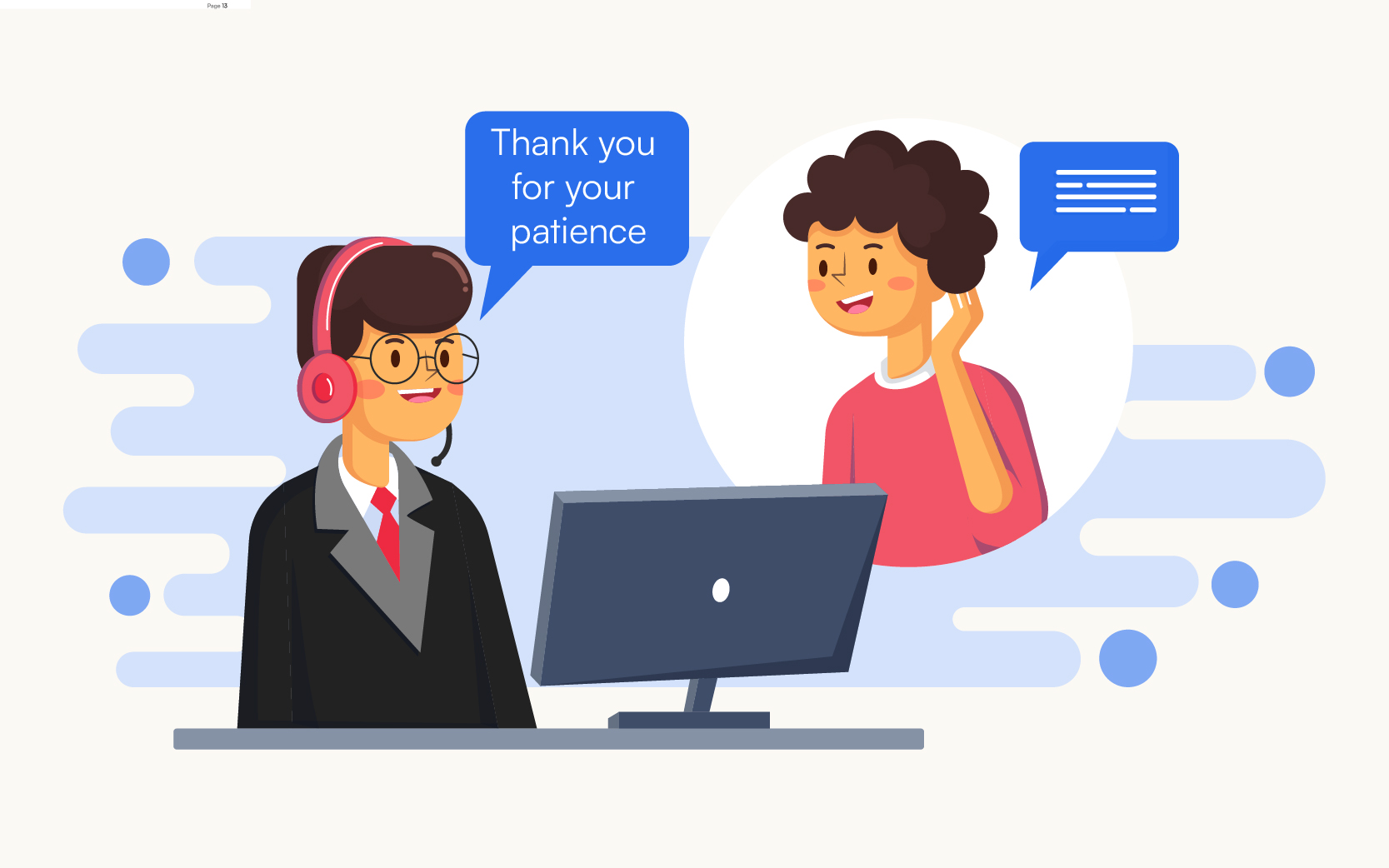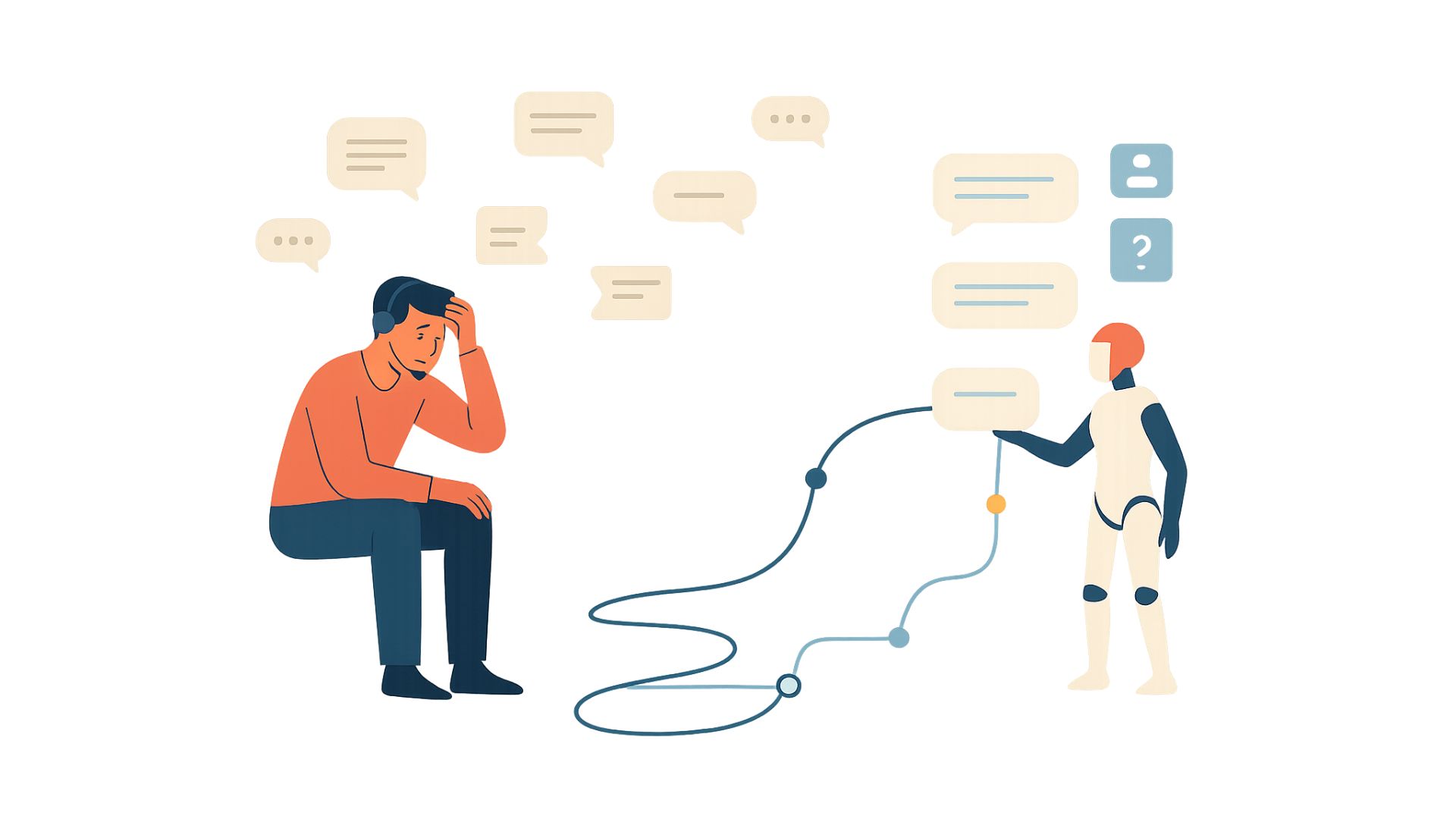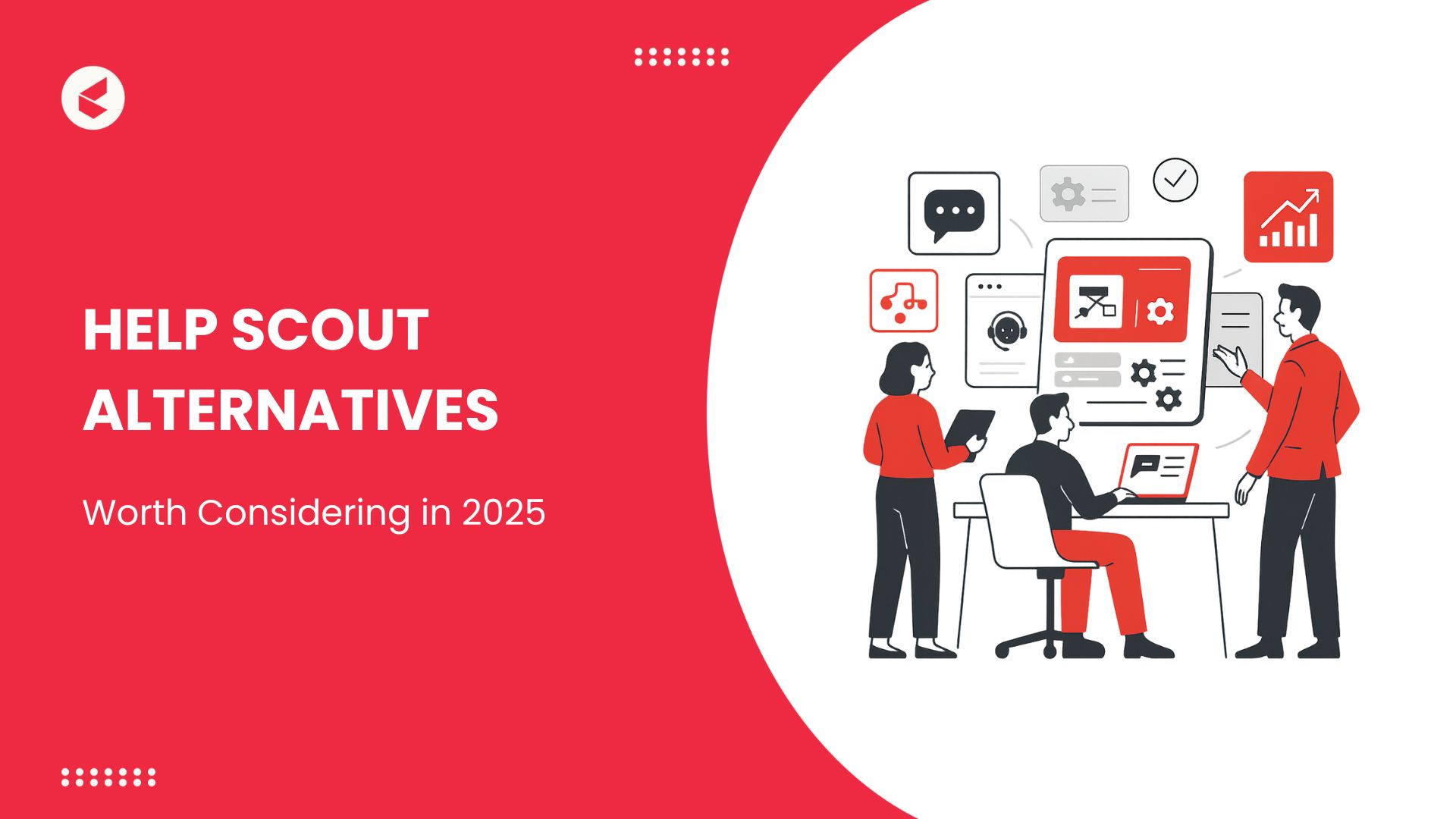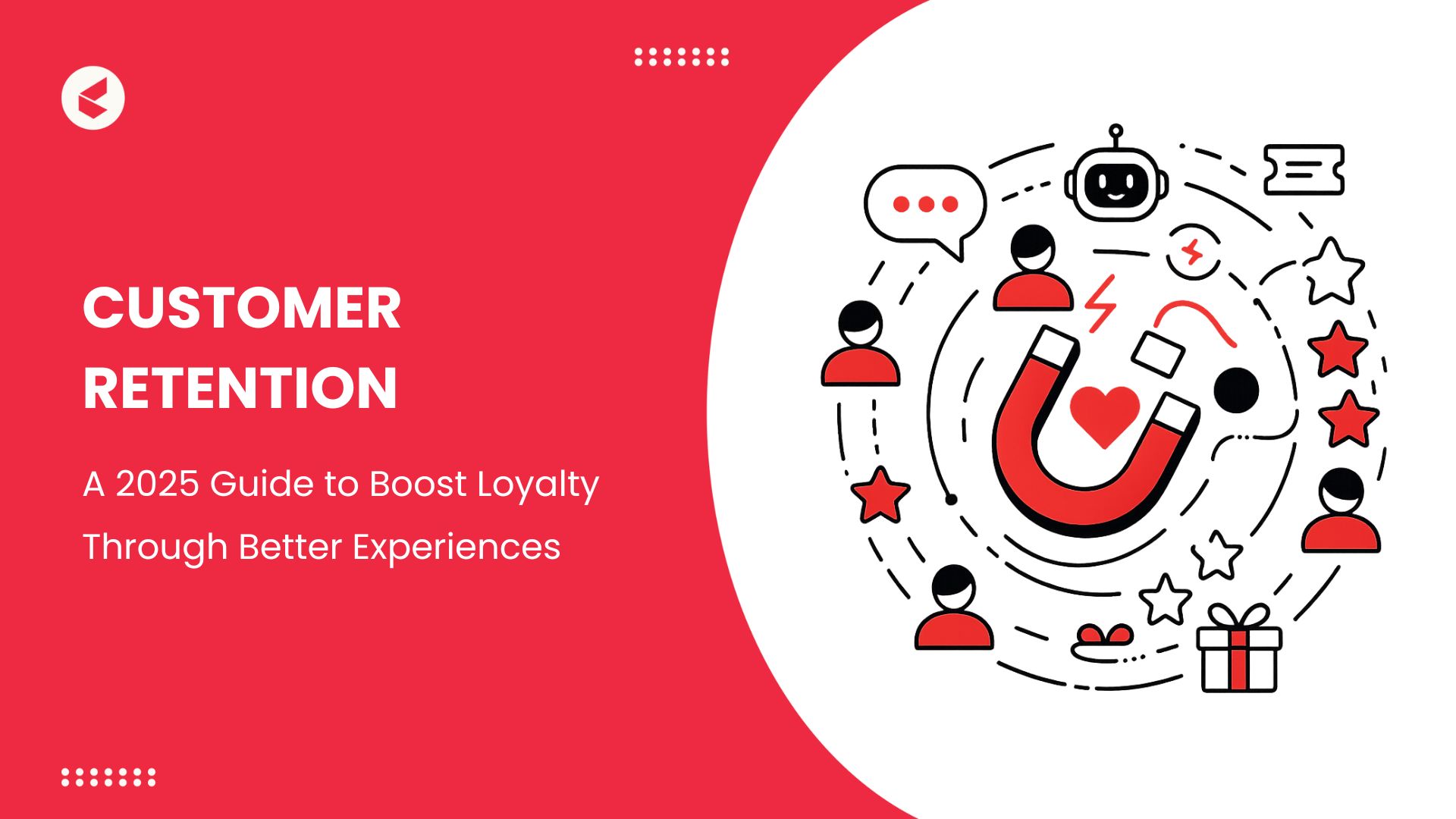‘I cannot help you with that.’
‘I see the issue, let’s see what we can do.’
If you were a customer interacting with a customer service agent, which phrase would have left you feeling better?
It goes without saying anyone would appreciate the second option. This shows how important it is to use positive language during an interaction. Positive language is a technique that incorporates using positive words and phrases with a positive attitude in your everyday conversations. Positive language makes a person feel good after they end a conversation.
What is positive language in customer service?
Using positive language in customer service means telling your customers what you can do for them instead of what you can’t. Positive language doesn’t just tell the customer what can be done but also offers options and alternatives and is helpful and encouraging.
It empathizes with the customers and puts their benefits and convenience in front of everything else. Using positive language in customer service is as important as active listening. They are both integral parts of the communication process. Positive language coupled with active listening can only enhance your company’s customer experience quotient.
Importance of using positive language in customer service
Around 93% of customers receiving the best service will make another purchase. Good interaction with the customer leaves a feeling of value and respect and turns even bad situations into manageable conversations, thus allowing a customer to be walked out with a higher state of satisfaction.
The most obvious benefit of using positive language in customer service is a better and improved relationship with your customers. If you build the foundation of your interactions through positive language, your customers are more likely to be cooperative rather than argumentative.
Using positive language doesn’t mean that we’ll never say ‘no’ to a customer because we won’t always be able to cater to their demands. Adopting positive language means that we’ll be changing the way we approach a conversation. Leading with what we can do for the customers and giving it a positive spin, customers will walk away from the conversation with an enhanced customer experience.
The practice of usingpositive body language in customer service not only enhances customer experience but it can also have a positive effect on you and your colleagues. Since language influences our thoughts, regularly using positive language will also lead to positive thoughts and attitudes.
Positive language when used properly can improve your customer experience while at the same time lower the effort customers have to put into resolving issues.
Foster Relationships with Customers
People often respond better when they feel heard and valued. Positive language opens lines of interaction, making customers feel more cooperative and open to discussion. It’s not just about what you say; it’s how you say it.
Turns ‘No’ Into A More Positive Response
Saying ‘no’ is part of any customer service staff’s job description, but it shouldn’t become a dead end. The focus should be on what can be done. “It’s out of stock, but we should see a new shipment next week.” That sounds much more friendly than an outright ‘no. ‘ The idea is to leave the customer with hope instead of frustration.
Positively Influences Your Work Environment
The words we speak affect the way we think. Constantly using positive language not only creates good impressions for customers but also shapes the way the teams think. When conversations focus on solutions instead of barriers, the environment turns towards positivity and proactive solutions.
Decreases Customer Effort
Language so crystal-clear, encouraging, and fluent allows minimal effort for problem resolution. Customers ought to leave satisfied, not drained, after prolonged discursive exchanges.
Provides an All-round Powerfully Positive Customer Experience
Words are all-powerful. A properly worded message can drastically change a customer’s perspective about a company. It means either de-escalating situations with the right words or simply telling them what they need to hear to make their day a wee bit better.
Negative words vs positive words in customer service
Positive language makes the listener feel good. They feel heard, helped, and justified. At the same time, negative language makes the listener feel ‘taken for granted’ and criticized. The positive language leaves a conversation open for more interaction, whereas negative language quickly shuts it down.
Positive language:
The choice of the right words and phrases, verbal and written, communicated with a positive attitude so that it makes your customers feel good is positive language. Positive language isn’t about skirting around negative and difficult topics. It’s using language that reassures, and gives hope and options.
Negative language:
Opposed to that, negative language often leaves the customers feeling criticized or blamed. When we use negative language to communicate, customers may take our message the wrong way. Negative language can give the impression that you’re being obstructive instead of supportive and helpful.
A comparison of positive and negative customer service language traits will give you an idea of how damaging negative language is for customer services:
| POSITIVE LANGUAGE | NEGATIVE LANGUAGE |
| Active | Passive |
| Motivating | Limiting |
| Proactive | Reactive |
| Helpful (I and we statements) | Critical (You statements) |
| Focuses on what can be done (Gives options and alternatives) | Focuses on what can’t be done(No options or alternatives are provided) |
Here’s an example of positive and negative customer service language usage.
Negative usage:
‘That item is not in stock, we won’t get it for another two weeks.’
Positive usage:
‘That item is currently out of stock but I can pre-order it for you, and it’ll be with you in two weeks. Would you like me to go ahead with that?’
As you can see the first conversation is passive, limiting, and focuses on what can’t be done. Whereas the second conversation conveys the same message but is proactive, helpful, and focuses on what can be done.
18 best ways to use positive language in customer service
Now that you know how much of an impact positive or negative language can have on your customers, here are 18 best ways to help you in using positive language.
1. Avoid Negative Action Words
Words like ‘can’t’, ‘don’t’, won’t, unable should be used judiciously. These are dismissive words that frame the interactions in a negative light. Use words like ‘instead of’, ‘if you’, etc. these are open-ended and have space to provide alternatives for the customers.
2. Focus on what can be done
Focus on what can be done during an interaction with a customer. Taking an active role is one of the main things to take note of while adopting the use of positive language in communication. In the previous example, the service agent is taking an active role by offering to pre-order the item for the customer.
3. Eliminate Negative Connotations
Try to use words like ‘definitely’ instead of ‘no problem’. Here the word ‘problem’ has negative connotations so the customer might think that it is a problem. Since negative connotations are words associated with bad ideas, feelings or emotions, it is always good to not steer the customers towards those thoughts and ideas.
4. Incorporate Positive Words
Use words like ‘quickly’, ‘fantastic’, ‘wonderful’, ‘great’, etc. to enhance your messages while using positive language. Using negative words and phrases like ‘impossible’, ‘no’, ‘there’s nothing we can do’, etc. will highlight the things which you can’t/don’t want to do. This can be very frustrating for your customers.
5. Speak aloud while typing
Body language and tone of voice also play a big role in any conversation. When your interaction is in-person or on the phone you can use your tone or body language to your advantage. However, it’s hard to do that via emails, social media, or live chats. Without the benefit of body language or tone of voice, your customers might not understand or misconstrue what you’re trying to tell them.
A technique to get past this obstacle is to speak and read aloud what you’re writing in your email, text or live chat. Hearing yourself while writing can help you predict if your message will be as you intended it for your customers.
6. Avoid Guessing Customer Needs
Just like in active listening, where you should never interrupt a customer, you should never guess beforehand what a customer might be looking for. Offering them a product or service which they don’t care for because you ‘jumped the gun’ and started talking before they had finished their request will put you in a bad light.
Always listen actively to the customer. Let them finish talking, clarify and analyze what they just said before you offer any advice. Remember, ‘put your brain into gear before you set your mouth in motion’.
7. Align with Brand Tone
Your interactions should be consistent with your brand’s tone or image. Keeping a uniform language in accordance with your brand values and engaging with your customers, in the same way, will keep them interested in your brand.
For example, if you’re a company that deals with highly technical products and services, your customer service agents shouldn’t come across like they’re service agents for a grocery store chain.
8. Use punctuation and emojis
Studies have shown that use of emoticons and emojis in online communications helps strengthen a message and expresses emotion. – Source
Proper use of punctuations like exclamation marks and even smiley face emojis in your messages can give off a positive attitude feel for your customers. A positive attitude is generally contagious, so it will benefit both your customer agents as well as your customers to have a healthy and positive interaction.

9. Avoid Trendy and Filler Words
Don’t use words that you wouldn’t normally use in your regular everyday conversations. Use shorter alternatives for words like ‘absolutely’ which are regularly overused. Use ‘yes’, ‘of course, ‘it can’, etc. After all, that is how you would talk while having a regular conversation. ‘Obviously’, is another word that’s regularly used out of context.
If you’re explaining something to a customer and you throw in the word ‘obviously’, they might feel uncomfortable if what you’re saying is not obvious to them. Other words and phrases like ‘you know’ and ‘it’s like’ are overused sentence fillers that add nothing to your conversations. Try to keep your conversations focused and direct by using simple words and phrases without using sentence fillers.
10. Use Gentle and Persuasive Language
Even if you mean well, using words and phrases like ‘you have to’, ‘you must’, etc. may come across as commands and orders for your customers. It’s only human nature for them to feel resentful and reluctant to listen to you.
Try telling them that you’re offering a solution for their problems and not attempting to make them do what you want. Using words like ‘you can….’, ‘please’, etc. are much more effective. Use words that show benefits for the customers like, essential, recommend, generous, etc.
11. Document Successful Interactions
Every now and then you’ll be able to explain something perfectly to a customer or quickly de-escalate a volatile situation. These are instances of perfect customer service.
Documenting and saving these scenarios into an LMS (learning management system) will make it easy for you and your colleagues to deal with similar situations in the same manner during future interactions.
12. Rephrase Negative References
Avoid using phrases like ‘this will be difficult’, ‘this step is hard’, etc. When your customers hear the words ‘difficult’ or ‘hard’, their attention level will go out the window. Remember, customers, don’t want to be burdened with ‘difficult’ or ‘hard’ fixes for their issues. That’s why they called you. To make it easy for themselves.
Swapping ‘interesting’ for ‘difficult’ or ‘hard’ can pique your customers’ interest and make them more engaged with you during your interaction.
13. Practice Active Listening
It sounds like such an easy thing to do but, it’s a skill that needs to be practiced. Active listening and positive language go hand in hand to enhance the customer experience.
You need to be wholly focused on what the customer is saying for you to be able to resolve their issues. Listening, but listening actively, to your customers will make them feel valued and looked after, enhancing their customer experience with you.
14. Limit Apologies and Show Appreciation
Whenever there’s an issue from your side, apologize, then move on and try to resolve it. Apologizing over and over again will put you on the defensive and you won’t be an equal during the interaction. This can take a toll on your confidence level.
Instead of apologizing constantly, thank the customers for their patience. This will show them that their issue is not a typical one, so they’ll be more accommodating with you.
15. Avoid Accusatory Language
Most customers don’t like to hear the words ‘you said’. It comes across as if your service agent is passing the blame unto the customers. Even in the context of just recalling what the customers said, ‘you said’ sounds like asking the customers to take accountability for everything they said.
Instead of ‘you said’, try to say ‘we previously spoke about’ and then paraphrase what the customer said. This helps lessen the accusatory tone that ‘you said’ brings up. Also, the use of ‘we’ instead of ‘you’ or ‘I’ makes it seem like a collaboration between the customer and the service agent. This will seem like the service agent is also invested in resolving the issue at hand with the customer.
16. Give Genuine Compliments
Complimenting a customer will give them a good feeling. It’s easy to hand out compliments but make sure they’re genuine and sincere. They should never be forced or sound robotic. Simple phrases like, ‘that’s a good option’ or ‘you’ve been extremely patient’ goes a long way in showing the customers that they’re appreciated and valued by you.
17. Provide Time-Bound Solutions
Customers invariably always want to know when their issues will be resolved. Providing your customers with time-based solutions will give them an idea of when their issues will be resolved. If you don’t know how long it will take for an issue to be resolved, provide your best estimate for a conservative resolution timeframe.
By doing so, you’ll either be able to provide a resolution ahead of time, provide it just on time or will have enough time to reset the resolution time with the customer. This will leave the customer feeling that you are working on trying to resolve their issue.
18. Offer Options and Alternatives
Whenever a customer reaches out to you, whether to know about a product, to buy a product or to raise an issue, give them options to decide what is best for them.
If a customer asks for a product or service which is currently unavailable, you can show them similar alternatives or offer to notify them when that particular product gets back in stock. This is way better than saying ‘no, that product isn’t available’.
Enhance Customer Service with Positive Language Training
Positive language is a vital skill in the customer service sector. It promotes positive emotions and customer satisfaction, transforming potentially confrontational interactions into cooperative ones.
Kapture’s LMS (Learning Management System) is designed to help you train your employees in using positive language effectively. With our platform, you can create custom training modules and store exemplary customer service scenarios for ongoing training and reference.
By equipping your team with these essential communication skills, Kapture ensures they can provide exceptional customer experiences and deliver helpful resolutions, enhancing your company’s overall service quality.
Take the next step towards a more positive customer experience. Let Kapture guide your team to success with our comprehensive training solutions, book a demo today!
Frequently Asked Questions
Positive language training teaches employees to use affirming and supportive phrases to improve customer interactions, leading to increased satisfaction and cooperation.
Examples include saying “I’ll find that information for you” instead of “I don’t know,” and “What we can do is…” instead of “We can’t do that.”
Use professional words like “assist,” “ensure,” “appreciate,” and “understand” to convey respect, competence, and empathy in customer interactions.
Negative words to avoid include “can’t,” “won’t,” “never,” and “unfortunately.” These words can frustrate customers and escalate situations.
5. What Are the Characteristics of Positive Language?
Using positive language does not mean avoiding negative or difficult subjects or sharing unpleasant news with a smile. It shall be sought that language reassures, inspires, and offers alternatives.
6. How to reframe the no using positive language?
Instead of saying “We can not do this,” say “This is what we can do for you.” Focus on alternatives, and on making the conversation positive and productive.
7. What Are the Qualities of Bad Customer Service?
Lack of empathy: The customer feels ignored and unappreciated.
Long response time: Slow response creates frustration among customers.
Unprofessional behavior: A bad attitude leads to a poor brand reputation.
Inconsistent information- Conflicting answers create confusion and distrust.
Failure to deal with problems- Only repeated problems will develop a problem with feeling satisfied.
Ignoring customer feedback- Oftentimes neglected suggestions are solutions waiting to be put into action.
Overuse of scripted responses- Forced and wooden interactions are neither personal nor helpful.
8. What are the 7 C’s of customer service?
1.Clarity – Clear communication avoids confusion.
2.Courtesy – Respectful and polite interactions.
3.Consistency – Reliable service every time.
4.Competence – Knowledgeable and skilled support.
5.Convenience – Easy access to assistance.
6.Customer Focus – Prioritizing customer needs.
Communication – Effective two-way interaction.
10. What is a positive phrase for customer service?
“I understand your concern, and I’m happy to help you.” This positive phrase is effective at the beginning or end of a conversation. Customers reached out because they needed assistance, so kicking off the conversion by saying you’re happy to help can set a positive tone.












